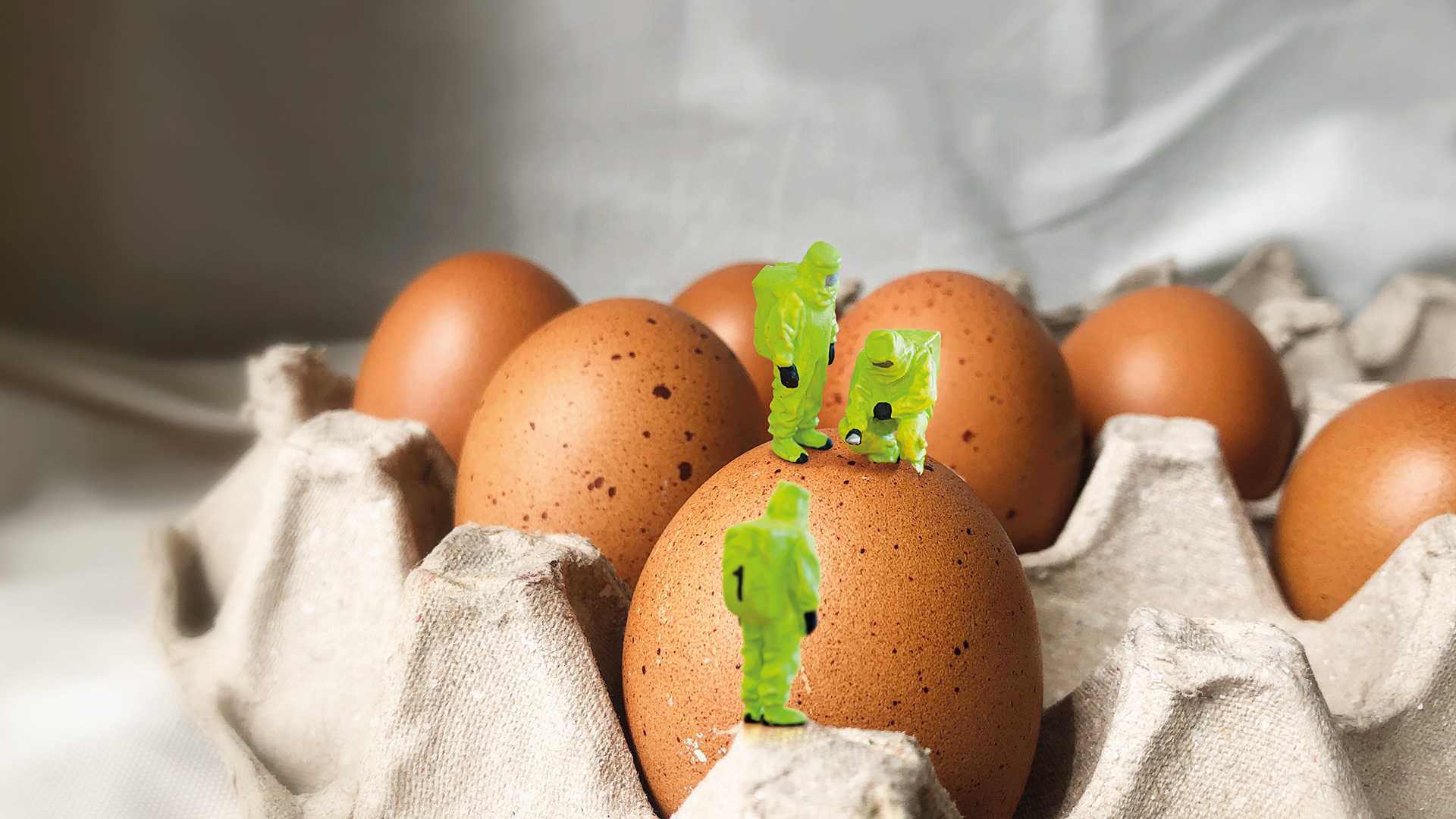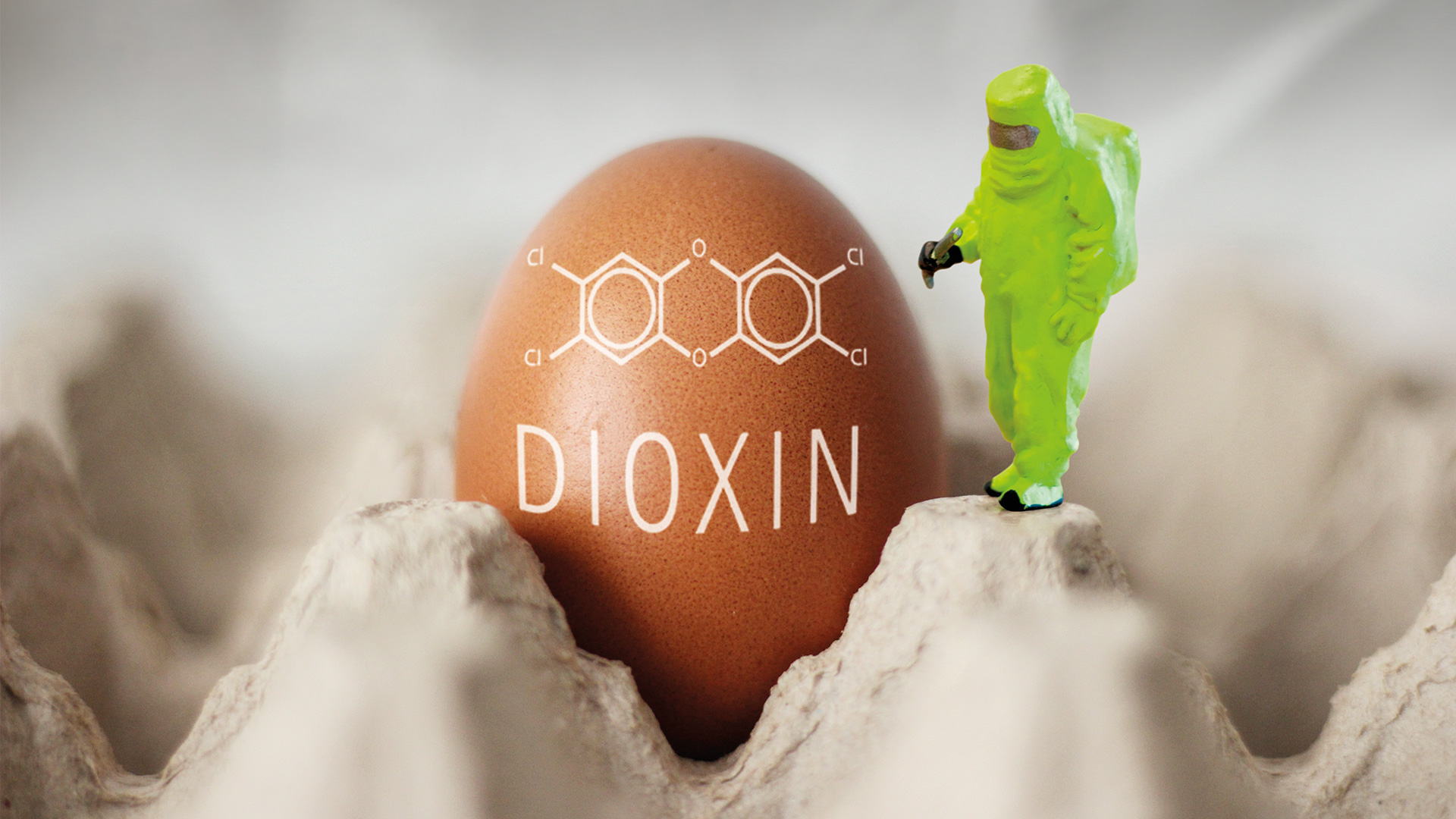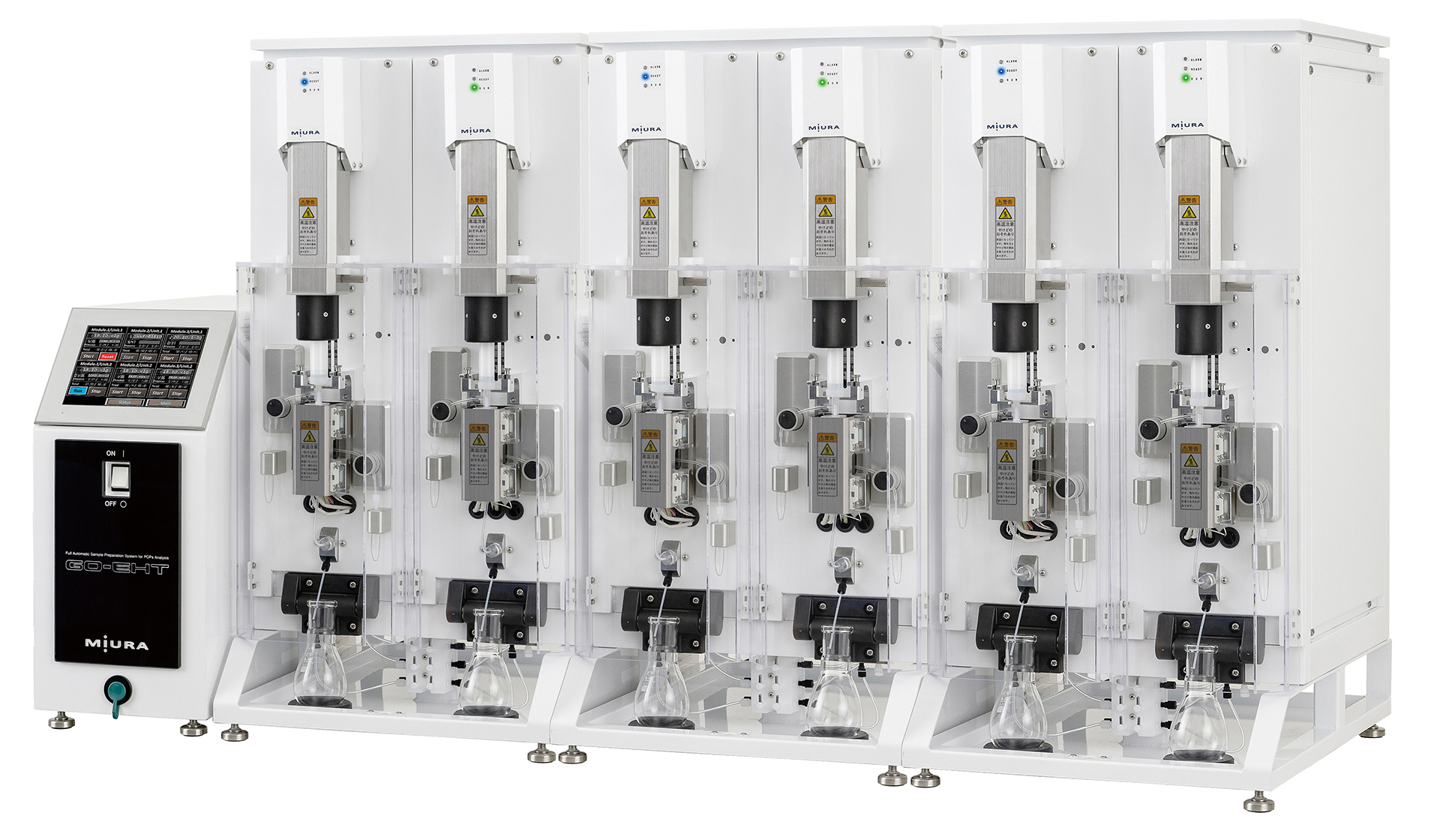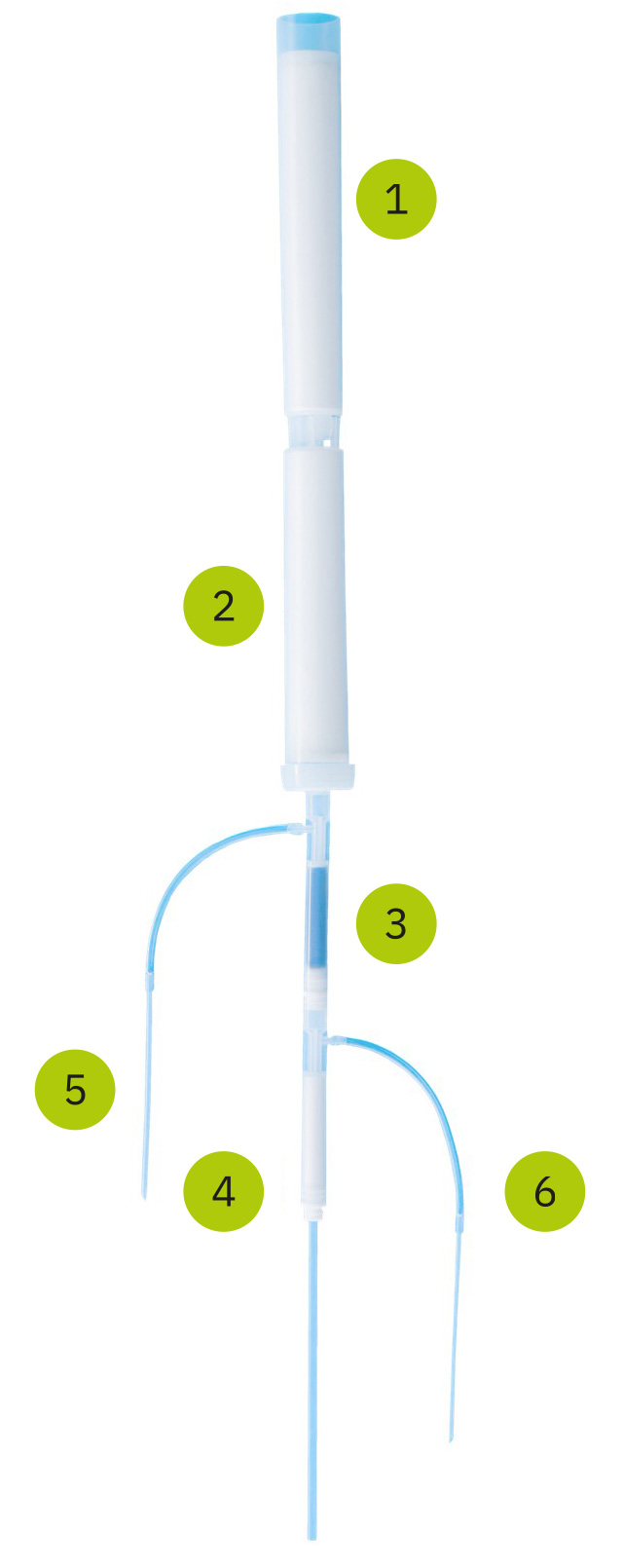
Quick … not dirty!
Highly efficient sample preparation for dioxin and PCB analysis
Martin Meyer, Shimadzu Europa GmbH
Martin Meyer, Shimadzu Europa GmbH
Dioxins and polychlorinated biphenyls (PCBs) are extremely toxic substances that occur everywhere despite their danger. Therefore, the ability to reliably determine even the smallest quantities is particularly important. The Japanese company Miura has developed the GO-EHT system, which simplifies sample preparation for dioxins and PCBs considerably. In addition, the system fulfills the increasing number of legal requirements.
Martin Meyer, Shimadzu Europa GmbH
Dioxins and polychlorinated biphenyls (PCBs) are extremely toxic substances that occur everywhere despite their danger. Therefore, the ability to reliably determine even the smallest quantities is particularly important. The Japanese company Miura has developed the GO-EHT system, which simplifies sample preparation for dioxins and PCBs considerably. In addition, the system fulfills the increasing number of legal requirements.
Scandals, attacks, accidents: Dioxins have gained notoriety as toxic substances. For example, the use of the dioxin TCDD – better known as Agent Orange – in the Vietnam War or the accident in a chemical plant in Seveso in 1976, in which almost 200 people contracted chloracne. More recent events that prompted public interest were the poisoning of the Ukrainian president Viktor Yushchenko in 2004 and the dioxin scandal in Germany in 2011, when dioxin levels in meat and eggs were 77 times higher than permitted levels.[1]
Dioxins and polychlorinated biphenyls (PCBs), as seen in Figure 1, are produced in a variety of thermal processes in the presence of chlorine, such as the manufacture of chemicals and waste incineration. In recent decades, the emission of these substances has been greatly reduced through filters and process optimization, however illegal waste incineration remains a large emission source of dioxin contamination.
Due to their chemical properties, dioxins and PCBs are very persistent. In animals, they are predominantly stored in the liver and adipose tissue, where they accumulate. Humans mainly ingest the substances in food of animal origin. [2] Given their high toxicity and prevalence, it is important for these substances to be detected even in small quantities. To do this, they must be isolated from the respective foodstuff so that the samples can then be analyzed using GC-MS/MS.
Figure 1: The dioxin TCDD (left) and the general structure of polychlorinated biphenyls (PCBs) (right)
Sample preparation for dioxins
Before the analysis, the test materials must undergo an extensive sample preparation procedure. Most samples must first be homogenized and freeze-dried. Then either solid-liquid extraction or liquid-liquid extraction takes place. The samples are then cleaned using chromatography columns. Up to three different manually packed columns must be used. This purification process removes many of the matrix components from the sample, such as fats and fatty acids. After the purification, the samples are usually concentrated by evaporating the solvent in order to improve the detection limit. In short: This type of sample preparation is very complex, and it may take several days before a measurement can be performed.
Due to ever stricter legal regulations stipulating lower and lower limit values, the requirements for dioxin analytics are increasingly high. It was decided only recently to tighten the dioxin limit values for waste material in the EU.[3] This also means that more and more measurements are needed.
The Miura system is the solution
The Miura GO-EHT fully-automated sample preparation system reduces the preparation time for dioxin analysis to just over an hour. Moreover, the system is less labor-intensive, reduces labor costs and enables a higher throughput of samples. Specially prepared columns are used that are already packed and ready for purification. In addition to the 6-module design (Figure 2), the system is also available with 2 and 4 modules so that up to 6 samples can be managed at the same time via the user-friendly control unit.
Sample processing with the Miura system is as follows:
First, the fat is extracted from the food manually or by using an extraction system (e.g. Büchi). The food extract is dissolved in hexane and placed on the Miura column. The columns are inserted into the system and the program is started. The purification, concentration and fractionation of dioxins and PCBs is completely automated. The first two columns 1 and 2 (Figure 3) serve to capture matrix components of the food samples so that only the dioxins and PCBs can proceed. The column treated with silver nitrate removes sulfur-containing components, whereas in the column with sulfuric acid fats are hydrolyzed and basic components are removed.
Column 3 contains special carbon that retains the dioxins through structural effects. The PCBs continue to column 4, where they are captured through polar interactions with aluminum oxide; the remaining matrix components are separated. Through the targeted use of toluene, dioxins and PCBs are extracted from the columns and collected in separate ampules. This fractionation means that dioxins and PCBs can subsequently be analyzed separately. Depending on the sample being tested, there are differences in the composition of the material, the fat content and the question of whether dioxins should be examined alone or in combination with PCBs. Thus, the columns are available in different dimensions (Table 1). This ensures that the analysis is efficient and can be ideally tailored to the sample matrix.
Figure 3: Columns for the Miura system
1) AgNO3 silica gel column
2) H2SO4 silica gel column
3) Carbon column
4) Aluminum column
5) Dioxin fraction
6) PCB fraction
Full automation minimizes human error and always delivers reliable measurements. Heating the system improves the purification and accelerates the separation from other components. The columns designed for the system attach with a click and because they are used once, the columns do not need to be washed, which prevents cross-contamination. One of the greatest advantages is the significant reduction in solvent consumption. While other methods use up to 1,000 ml hexane, the GO-EHT system only requires around 100 ml. Moreover, the solvent dichloromethane (DCM) that is commonly used in other systems can be completely dispensed with when using the Miura system. This is another advantage because DCM is very toxic and heavily pollutes the environment.
|
Sample type |
Environmental samples |
||
|
Food samples |
|||
|
Type |
DXNmini 18 Ø |
Standard 20 Ø |
Mini 18 Ø |
|
Sample |
Environmental |
Food 3 g fat |
Food |
|
Purification (1) |
AgNO3 silica gel |
AgNO3 silica gel |
AgNO3 silica gel |
|
Purification (2) |
H2SO4 silica gel |
H2SO4 silica gel |
H2SO4 silica gel |
|
Concentration (3) |
Carbon |
Carbon |
Carbon |
|
Concentration (4) |
– |
Aluminum oxide |
Aluminum oxide |
|
Solvent consumption (hexane) |
85 ml |
90 ml |
85 ml |
|
Run time |
73 min |
80 min |
78 min |
Table 1: Column parameters for GO-EHT
Analysis with the Shimadzu GC-MS/MS analysis package
The subsequent analysis can be performed in several ways. Historically, the market for dioxin analysis has long been dominated by gas chromatography (GC) with a high-resolution mass spectrometer (HRMS). Due to new regulations, it has also become possible to use triple quadrupole MS. For this reason, a GC-MS/MS method package was developed by Shimadzu to facilitate the analysis and subsequent reporting. The validity of the Shimadzu method has been confirmed by several independent laboratories.
The method package includes optimized conditions for GC and MS such as retention times and masses for dioxins, polychlorinated biphenyls and brominated flame retardants (BFRs). In addition, established methods can be directly adjusted for new systems or GC columns with the automatic adjustment retention time (AART) function. Since particularly low limit values are required for dioxins, a corresponding ion source was developed and constructed. This Boosted Efficiency Ion Source, BEIS in short, can increase the efficiency of the ionization by up to a factor of 4.
Particular attention has also been paid to the fact that the test reports should be easy to write and contain all the information required by EU regulations as these can sometimes be very complex and therefore very time-consuming.
Conclusion
The Miura GO-EHT system offers many attractive advantages for sample preparation compared to the standard method. The combination of Miura preparation and Shimadzu GC-MS/MS provides ideal conditions for dioxin and PCB analysis.
Literature
- Kupferschmidt K. Dioxin scandal triggers food debate in Germany. CMAJ. 2011 Mar
- Rathoure AK. Dioxins: source, origin and toxicity assessment. Biodiversity Int J. 2018 Jul
- Store J. Council and Parliament agree to reduce limit values for the presence of persistent organic pollutants in waste. Council of the EU. 2022 Jul




